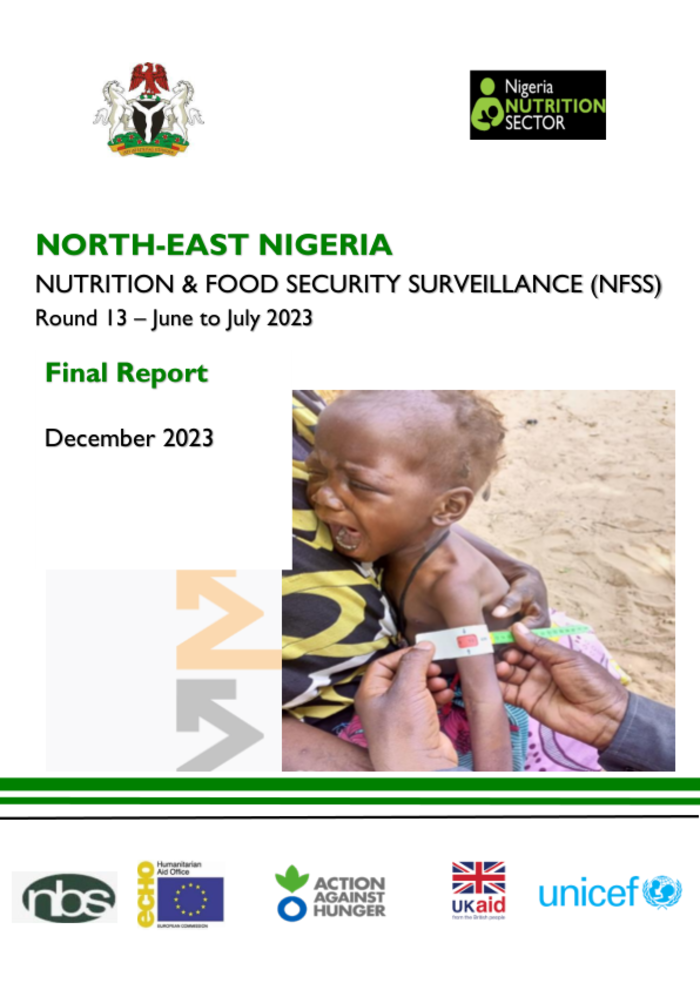
Executive Summary
The Boko Haram conflict was officially declared a state of emergency by the government at the outset of 2012. Presently, this state of emergency remains primarily concentrated in Borno, Yobe, and Adamawa states. The insurgency and associated political violence in these regions have resulted in significant population displacement, disrupted livelihoods, and acute food insecurity.
According to the International Organization of Migration’s (IOM) Displacement Tracking Matrix (DTM) round 44 report, as of February 2023, there are 2,200,679internally displaced persons (IDPs) scattered across Borno, Adamawa and Yobe states, and majority (62%) of them dispersed in host communities. This represents a nominal decrease of 3% (or 61,307individuals) when compared to the total IDPs from Round 42 (July 2022). Certain areas, namely Abadam, Guzamala, and Kukawa LGAs, remain inaccessible. Furthermore, round 44 of DTM recorded 2,110,039returnees, signifying an increase of 126,909individuals or over six percent compared to Round 42 (July 2022).
The cumulative impact of restricted freedom of movement, disrupted livelihoods, compromised markets, and hindered humanitarian access has given rise to a severe food insecurity and nutrition crisis in Northeast Nigeria. This crisis also extends to certain parts of Niger, Chad, and Northern Cameroon. The IPC Acute Malnutrition Analysis from September 2021 to November 20222 reflects a worsening nutrition situation, with the number of children aged 0-59 months in need of treatment increasing by 77%, rising from 1,148,906 in 2021 to 2,028,316 in 2023 (Figure 1).
In March 20233, the Cadre Harmonisé analysis and the FEWSNET Nigeria Food Security Outlook from March 2021 to February 20234 both reported a deterioration in the nutrition and food security landscape, with more individuals facing crisis situations. The CH analysis indicated that 3,207,298 people were in crisis (phase 3+) for the period of March-May 2023, a figure projected to increase to 4,250,397 people in crisis (phase 3+) for the period of June-August 2023. These numbers are comparable to those reported during the peak of the crisis in 2016/17 before the extensive scale-up efforts of 2017/18. This deterioration can be attributed primarily to ongoing conflict, including insecurity linked to insurgency and kidnapping, alongside challenges such as flooding and the elevated prices of both food and non-food items. These factors have directly and indirectly impacted the livelihoods and food consumption patterns of households.
The first round of repeated surveys was conducted in October-November 2016, the second round in February-March 2017, the third round in July-August 2017, the fourth round in November-December 2017, the fifth round in April-May, 2018 and the sixth round conducted jointly with WFP for both nutrition and food security (JANFSA) in October, 2018, seventh round in May-June, 2019, the eight round September-October 2019, the ninth round in October 2020, the tenth round in October 2021, the eleventh round in February-March 2022 and the twelve round in August-September 2022.
These surveys were carried out through a collaborative effort involving the National Bureau of Statistics (NBS), which worked closely with the State Primary Health Care Development Agencies in the BAY States, the Borno State Bureau of Statistics, and the Northeast Nigeria Nutrition Sector.
The financial support essential for the successful completion of these surveys was generously provided by the Government of Nigeria, the United Nations Children’s Fund (UNICEF), the European Commission Humanitarian Aid (ECHO), and the United Kingdom Foreign and Commonwealth Development Office (FCDO). Additionally, technical expertise and support were contributed by Action Against Hunger (ACF)-Canada and UNICEF in partnership with NBS.
